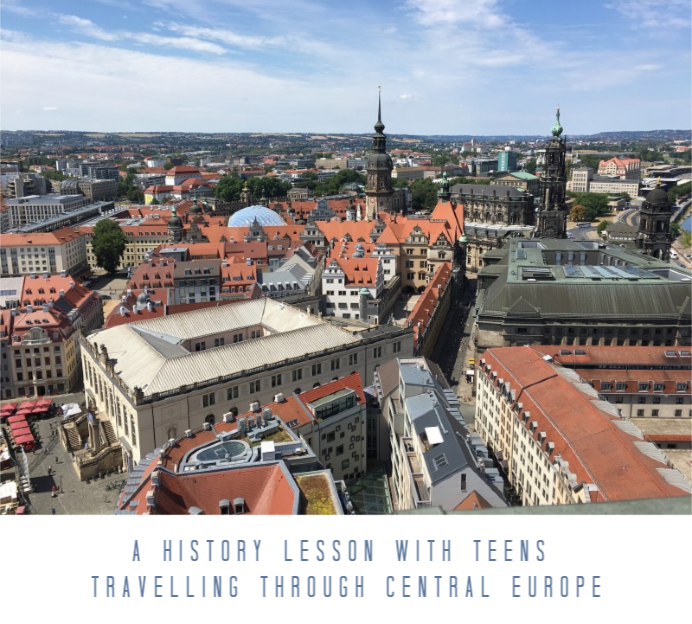Learning through books or a history class cannot compare to a first-hand travel experience. In the summer of 2018, using Europe’s amazing rail system, we were able to take a three-week trip to Central Europe to visit four countries and four world capitals. It was a history lesson, unlike anything our two teenage sons had experienced before.
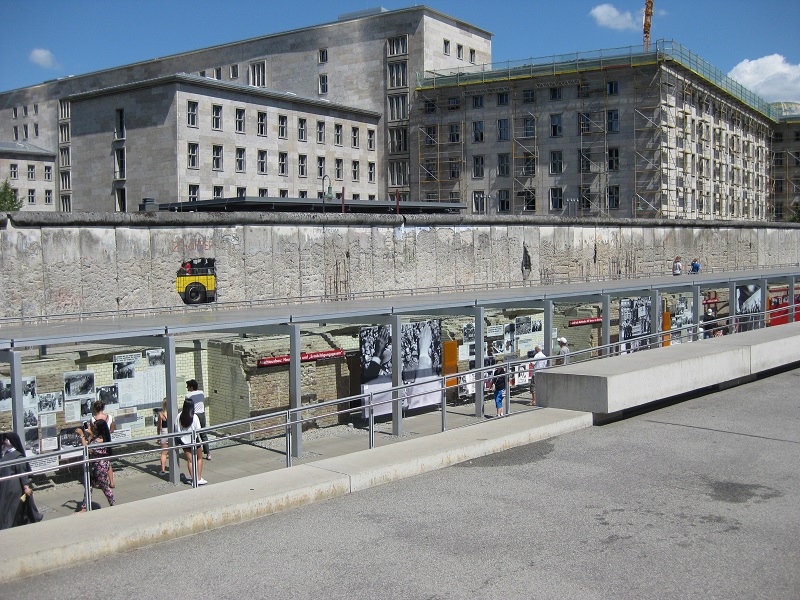
Berlin Wall – Photo Lisa Johnston
Our journey began in Germany’s capital city of Berlin. Hearing about the end of Communism and the collapse of the Berlin Wall in 1989, they never fully understood the significance until standing beside a memorial section of the wall. Once spanning 177 kilometres, the wall separated East and West Berlin – and even families – for more than 28 years. Today, Berlin is a vibrant, young city with a distinct edge. Although many of the buildings in what was formally East Berlin still boast simple grey Communist architecture, the graffitied walls add a unique atmosphere as do the bustling shops, cafés and markets.
Our history lesson included a trip to the Stasi Museum, a building that formerly served as the headquarters of the Eastern Berlin secret police; Checkpoint Charlie, the only official crossing point for Allied troops and foreigners between the two sides during the Cold War; and the Memorial to the Murdered Jews of Europe, a field of dark-grey blocks just down the street from the famed Brandenburg Gate. However, what resonated the most was the two rows of bricks, running down roads and across sidewalks indicating where the Berlin Wall once stood. With hardly a thought, we crossed back and forth over the marker without noticing unless we looked down, something impossible only 30 short years ago.
All history lessons should include a taste of the local fare. In Berlin, our favourite was currywurst, a take on fish and chips using bratwurst sausages and french fries (a staple dinner in our home today).
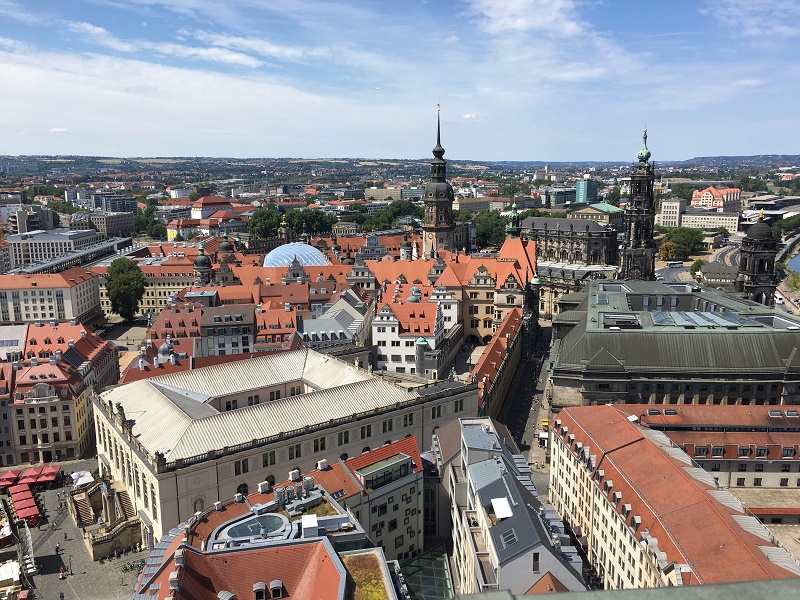
View from Dresden’s Church of Our Lady – Photo Lisa Johnston
Leaving Berlin, we hopped on a train to Dresden. Bombed by the Allies in February 1945 near the end of the Second World War, more than 3,900 tons of explosives destroyed 1,600 acres of the city centre and killed more than 25,000 people. The Dresden of today has been completely rebuilt to its former glory, brick by brick, by residents and volunteers. It’s signature landmark, the Church of Our Lady, lay in a pile of rubble for close to 50 years until reconstruction began in 1994 following the reunification of Germany. A highlight for our boys was the climb 67 metres to the top of the church dome where a platform allowed for breathtaking views of the old centre. Once back down to the ground, a stop at one of many German chocolatiers restored our energy.
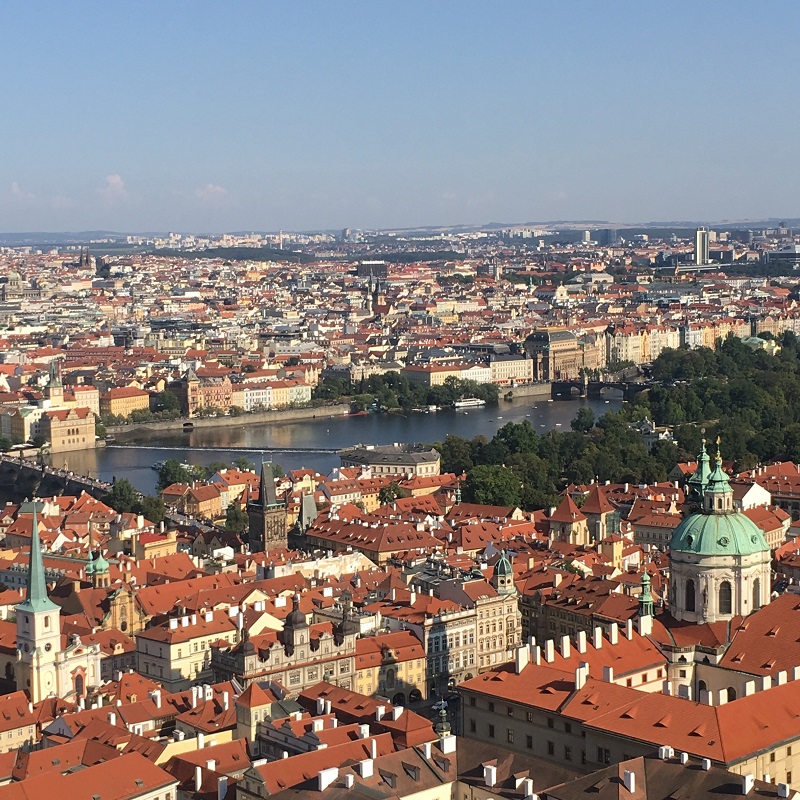
Prague – View from the top of St Vitus Cathedral – Photo Lisa Johnston
The cobblestone streets of old Prague and its red roofs made us feel we had stepped off a train into a medieval fairy tale. Suffering only minor damage at the very end of the Second World War, Prague was virtually untouched as German forces marched relatively unopposed into the capital city. Our history lesson included a visit to the old town centre and a stroll across the famous Charles Bridge which led us to Prague Castle on the west side of the Vltava River. With a variety of tours available to explore the castle and its grounds, our boys chose to climb the 287-step St. Vitus Cathedral in 35 C summer heat. It was a race I did not win, but the stunning view of Prague, the bridge and the river beyond made the journey well worth the effort as did the reward at the end: eating trdelnik (a donut ice-cream cone) and listening to a violin quartet play the rock music of Green Day to a crowd of all ages gathered around the square.
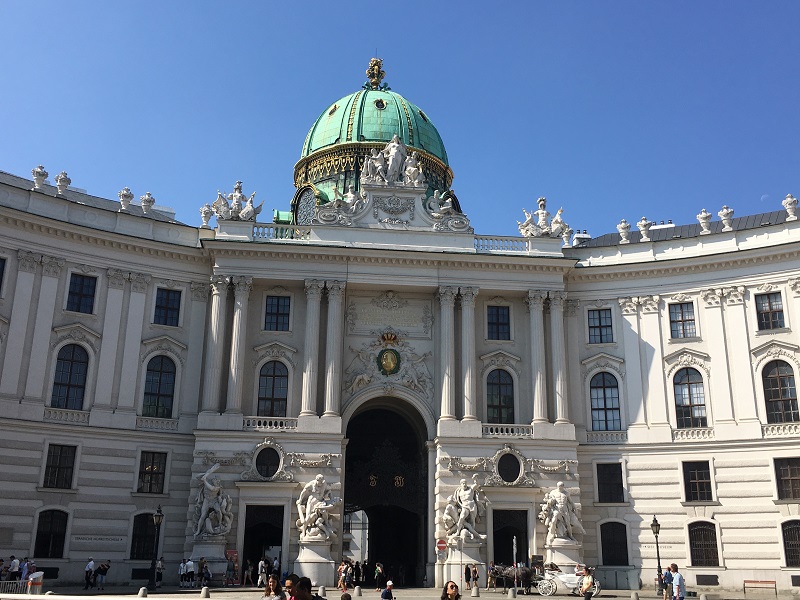
Vienna’s Summer Palace – Photo Lisa Johnston
While not part of the Soviet regime, Austria was annexed into Nazi Germany in 1938. With its whitewashed streets and buildings, Vienna has a strikingly different feel than dark Prague. For teens fascinated with palaces, Vienna offers two – the summer palace and the winter palace where the Habsburg dynasty ruled until 1918. Just as impressive was standing at the base of St. Stephen’s Cathedral, which has kept watch over the city for more than 700 years. Wanting a taste – or sip – of Austrian culture, a must-stop was one of the century-old coffee shops located throughout the city. Austrian coffee is served with a glass of water on the side, and while not necessarily appealing to teenagers, even parents deserve a break after a long day of sightseeing.
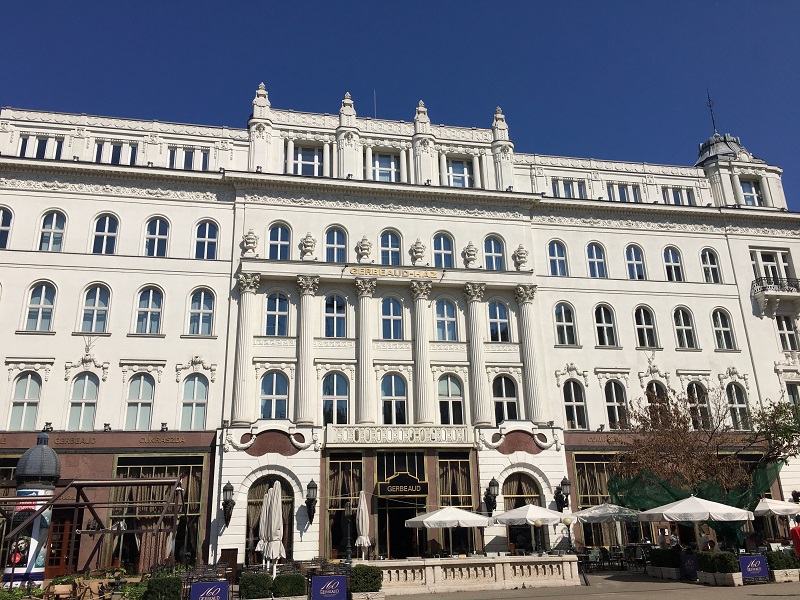
The Gerbeaud Bakery in Budapest- Photo Lisa Johnston
Last on the itinerary was the city of Budapest, Hungary’s capital city. Budapest was a little further removed from Communist control which resulted in more freedom, and the vibrant city became known for shopping, rock concerts and the first McDonald’s east of the Iron Curtain. Gerbeaud, a bakery and coffee house established 1858, served treats not available in other Communist cities, and today remains a popular spot for locals and tourists, prompting us to stop for a history lesson in Hungarian chocolate cake. For teen boys who like fantasy movies, a visit to Fisherman’s Bastion on Castle Hill was definitely a highlight as was the evening river cruise down the Danube where buildings along the waterfront shimmered in bright lights.
We came home tired and with sore feet but enriched by our experience and more appreciative of different cultures of the world which have created the remarkable destinations and countries that exist today.

Lisa Johnston is a communications consultant and serves as editor of the national trade magazine Canadian Funeral News. She is also a freelance writer and editor for several Canadian magazines and when not at her desk, enjoys travelling the world with her family.

